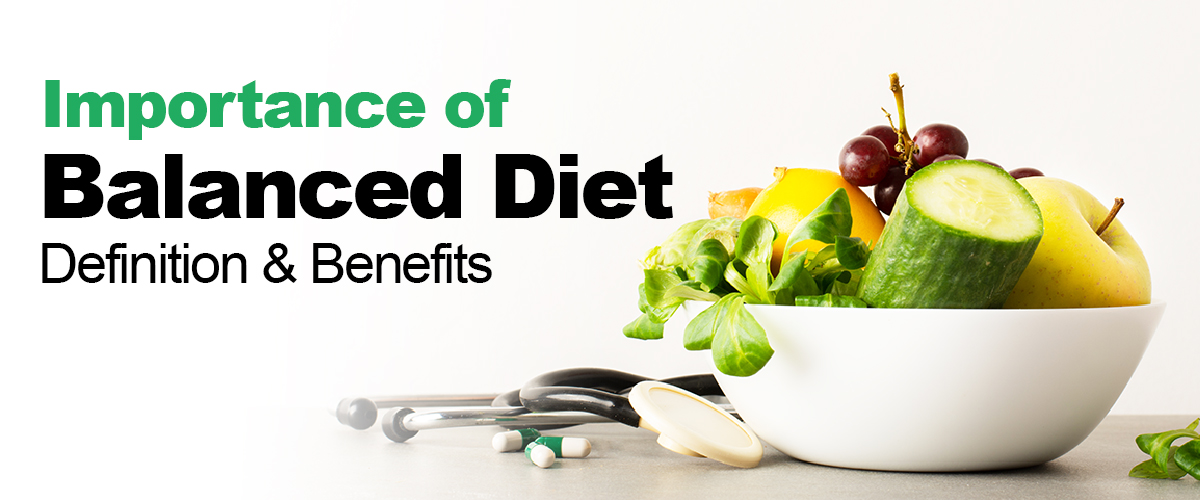The Importance of a Balanced Diet: A Guide to Healthy Living

A balanced diet is the cornerstone of a healthy lifestyle. It provides the body with essential nutrients to function efficiently, supports overall well-being, and prevents chronic diseases. This article delves into what constitutes a balanced diet, its benefits, and practical tips for incorporating it into daily life.
What is a Balanced Diet?
A balanced diet includes a variety of foods in appropriate proportions to provide the necessary nutrients the body needs. It typically consists of:
- Carbohydrates: These are the body’s primary energy source. Whole grains, fruits, and vegetables are excellent sources of healthy carbohydrates.
- Proteins: Essential for growth, repair, and maintenance of body tissues. Lean meats, fish, eggs, legumes, and nuts are protein-rich options.
- Fats: While often misunderstood, healthy fats are crucial for brain function and energy. Avocados, nuts, seeds, and olive oil are examples of healthy fat sources.
- Vitamins and Minerals: Found in fruits, vegetables, and dairy products, these nutrients support immune function, bone health, and overall vitality.
- Water: Staying hydrated is as important as consuming the right foods. Water aids in digestion, nutrient absorption, and toxin elimination.
Benefits of a Balanced Diet
- Improved Energy Levels: Eating a balanced diet ensures the body has sufficient fuel to perform daily activities efficiently.
- Weight Management: Proper nutrition helps maintain a healthy weight by preventing overeating and promoting metabolism.
- Disease Prevention: A diet rich in fruits, vegetables, and whole grains can reduce the risk of chronic diseases such as heart disease, diabetes, and certain cancers.
- Enhanced Mental Health: Certain nutrients, like omega-3 fatty acids and antioxidants, are known to improve mood and cognitive function.
- Stronger Immune System: A nutrient-rich diet strengthens the body’s defenses against illnesses.
Components of a Balanced Meal
Creating a balanced meal involves combining foods from all major food groups. A simple guide is the “plate method”:
- Half the plate with fruits and vegetables: Opt for a variety of colors to maximize nutrient intake.
- A quarter of the plate with lean proteins: Include options like grilled chicken, tofu, or fish.
- A quarter of the plate with whole grains: Brown rice, quinoa, or whole-grain bread are excellent choices.
- Healthy fats in moderation: Add a small serving of nuts or a drizzle of olive oil.
Tips for Maintaining a Balanced Diet
- Plan Your Meals: Preparing meals in advance helps ensure you include all food groups and avoid unhealthy choices.
- Read Labels: Understanding nutritional information on packaging can help you make better food choices.
- Practice Portion Control: Eating appropriate portions prevents overeating and ensures balanced nutrition.
- Limit Processed Foods: Focus on whole, unprocessed foods for maximum health benefits.
- Stay Consistent: A balanced diet is not a one-time effort but a sustainable lifestyle choice.
Common Myths About a Balanced Diet
- “Carbs Are Bad”: Carbohydrates are essential for energy. The key is to choose complex carbs like whole grains instead of refined sugars.
- “Fats Make You Fat”: Healthy fats are vital for bodily functions. It’s the type and quantity of fat that matter.
- “Skipping Meals Helps Lose Weight”: Skipping meals can lead to overeating later and disrupt metabolism.
Challenges and How to Overcome Them
- Busy Lifestyle: Lack of time is a common barrier. Solution: Prepare quick, nutrient-dense meals or meal prep for the week.
- Cost of Healthy Foods: Healthy eating doesn’t have to be expensive. Buy seasonal produce and focus on affordable staples like beans and lentils.
- Food Preferences: Dislike for certain foods can be an obstacle. Experiment with different recipes to make healthy options more appealing.
Conclusion
A balanced diet is fundamental to a healthy and fulfilling life. By understanding its components and benefits, you can make informed choices to enhance your well-being. Start small, make gradual changes, and remember that consistency is the key to success. Your body will thank you for the effort, and the long-term rewards will be well worth it.





